MaryAnn Bernal's Blog, page 255
July 25, 2014
Did All Dinosaurs Sport Feathers? Downy Beast Suggests Yes
By Tanya Lewis
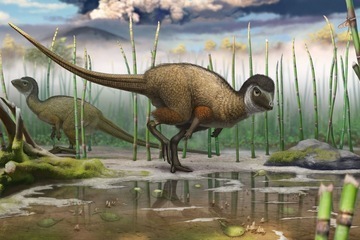
 The plant-eating dinosaur Kulindadromeus zabaikalicus in its natural environment
The plant-eating dinosaur Kulindadromeus zabaikalicus in its natural environment
Credit: Andrey Atuchin
Steven Spielberg's "Jurassic Park" might need a little more revising — a newly discovered dinosaur species offers hints that feathers were much more common among the ancient beasts than once thought.
Researchers unearthed hundreds of fossils of a new genus and species of plant-eating dinosaur called Kulindadromeus zabaikalicus in Siberia that sports both feathers and scales. The finding suggests that most dinosaurs had feathers, which they used for insulation or attracting mates, only later relying on the fringes for flight, according to a study detailed today (July 24) in the journal Science.
"Here, for the first time, we have found featherlike structures in a dinosaur [that] is far from the lineage leading to birds," said study co-author Pascal Godefroit, a paleontologist at the Royal Belgian Institute of Natural Sciences in Belgium.
Scientists have long known that birds descended from dinosaurs. Since the mid-1990s, paleontologists in China have been finding feathered dinosaur skeletons from about 20 different groups, but they all belonged to a single lineage, theropods, which includes Tyrannosaurus rex and velociraptors. In fact, some scientists believe T. rexmay have sported some feathers itself.
Godefroit and his colleagues found hundreds of skeletons of the same species, from a lineage of plant-eating dinosaurs known as ornithischians, which lived about 160 million years ago during the middle to late Jurassic period. Researchers found the fossils buried in the bottom of what appears to have been a large lake.
"It was a small animal, not very impressive," Godefroit said. It was about 4.9 feet (1.5 meters) long; walked on two long, slender legs; and sported very short arms, he said.
The little dinosaur skeleton was equipped with preserved long filaments resembling downy feathers around its arms and legs. Because the animal couldn't fly, the scientists think these filaments may have served as insulation. The specimen also had more-complex feathers that it may have used to entice mates, Godefroit said. The animal had a long tail, covered in large, thin scales.
The preservation of soft tissues such as feathers and scales is extremely rare, the researchers said, which explains why relatively few feathered dinosaur fossils have surfaced before. "The conditions for preserving feathers are really exceptional," Godefroit said.
"This is the first time birdlike feathers have been found in dinosaurs that are not closely related to birds," said Darla Zelenitsky, a paleontologist at the University of Calgary in Canada, who was not involved in the research. "This unexpectedly reveals that such feathers would likely have been present in most groups of dinosaurs," Zelenitsky told Live Science in an email.
Steve Brusatte, a paleontologist at the University of Edinburgh in Scotland, agreed that feathers probably existed in the common ancestor of all dinosaurs. The idea is not a new one, he said; two other fossils of plant-eating dinosaurs found in China had simple, filamentlike feathers, but it was debatable whether these were related to bird feathers, or evolved independently. Now, this new evidence "seals the deal that feathers were also present in plant-eating dinosaurs," Brusatte told Live Science.
As for the fossil scales, they resemble modern birds' scales, which are actually aborted feathers, the researchers said. In chickens, for example, genes in the skin control the development of feathers. If these genes are modified, the chicken will sprout feathers on its legs, like that of an English chicken. Perhaps primitive dinosaurs had already developed this genetic mechanism of preventing feathers from developing in certain parts of their bodies, Godefroit said.
More fossils must be found in order to determine if other groups of dinosaurs besides theropods and ornithischians had feathers, the researchers said. "We found [feathered fossils] in one locality in Siberia, and we will look around now to see if we can find more," Godefroit said.
http://www.livescience.com/46991-first-feathered-plant-eating-dinosaurs.html

 The plant-eating dinosaur Kulindadromeus zabaikalicus in its natural environment
The plant-eating dinosaur Kulindadromeus zabaikalicus in its natural environmentCredit: Andrey Atuchin
Steven Spielberg's "Jurassic Park" might need a little more revising — a newly discovered dinosaur species offers hints that feathers were much more common among the ancient beasts than once thought.
Researchers unearthed hundreds of fossils of a new genus and species of plant-eating dinosaur called Kulindadromeus zabaikalicus in Siberia that sports both feathers and scales. The finding suggests that most dinosaurs had feathers, which they used for insulation or attracting mates, only later relying on the fringes for flight, according to a study detailed today (July 24) in the journal Science.
"Here, for the first time, we have found featherlike structures in a dinosaur [that] is far from the lineage leading to birds," said study co-author Pascal Godefroit, a paleontologist at the Royal Belgian Institute of Natural Sciences in Belgium.
Scientists have long known that birds descended from dinosaurs. Since the mid-1990s, paleontologists in China have been finding feathered dinosaur skeletons from about 20 different groups, but they all belonged to a single lineage, theropods, which includes Tyrannosaurus rex and velociraptors. In fact, some scientists believe T. rexmay have sported some feathers itself.
Godefroit and his colleagues found hundreds of skeletons of the same species, from a lineage of plant-eating dinosaurs known as ornithischians, which lived about 160 million years ago during the middle to late Jurassic period. Researchers found the fossils buried in the bottom of what appears to have been a large lake.
"It was a small animal, not very impressive," Godefroit said. It was about 4.9 feet (1.5 meters) long; walked on two long, slender legs; and sported very short arms, he said.
The little dinosaur skeleton was equipped with preserved long filaments resembling downy feathers around its arms and legs. Because the animal couldn't fly, the scientists think these filaments may have served as insulation. The specimen also had more-complex feathers that it may have used to entice mates, Godefroit said. The animal had a long tail, covered in large, thin scales.
The preservation of soft tissues such as feathers and scales is extremely rare, the researchers said, which explains why relatively few feathered dinosaur fossils have surfaced before. "The conditions for preserving feathers are really exceptional," Godefroit said.
"This is the first time birdlike feathers have been found in dinosaurs that are not closely related to birds," said Darla Zelenitsky, a paleontologist at the University of Calgary in Canada, who was not involved in the research. "This unexpectedly reveals that such feathers would likely have been present in most groups of dinosaurs," Zelenitsky told Live Science in an email.
Steve Brusatte, a paleontologist at the University of Edinburgh in Scotland, agreed that feathers probably existed in the common ancestor of all dinosaurs. The idea is not a new one, he said; two other fossils of plant-eating dinosaurs found in China had simple, filamentlike feathers, but it was debatable whether these were related to bird feathers, or evolved independently. Now, this new evidence "seals the deal that feathers were also present in plant-eating dinosaurs," Brusatte told Live Science.
As for the fossil scales, they resemble modern birds' scales, which are actually aborted feathers, the researchers said. In chickens, for example, genes in the skin control the development of feathers. If these genes are modified, the chicken will sprout feathers on its legs, like that of an English chicken. Perhaps primitive dinosaurs had already developed this genetic mechanism of preventing feathers from developing in certain parts of their bodies, Godefroit said.
More fossils must be found in order to determine if other groups of dinosaurs besides theropods and ornithischians had feathers, the researchers said. "We found [feathered fossils] in one locality in Siberia, and we will look around now to see if we can find more," Godefroit said.
http://www.livescience.com/46991-first-feathered-plant-eating-dinosaurs.html

Published on July 25, 2014 16:43
Egyptian Carving Defaced by King Tut's Possible Father Discovered
By Owen Jarus
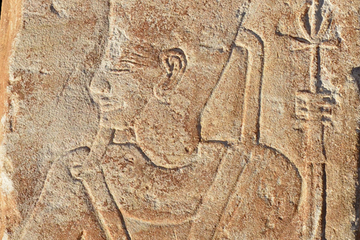
 Here, the upper part of the Egyptian carving, showing the hieroglyph of Amun (top left); the hieroglyph and the god's face were hacked out on orders of pharaoh Akhenaten (reign 1353-1336 B.C) and were later restored.
Here, the upper part of the Egyptian carving, showing the hieroglyph of Amun (top left); the hieroglyph and the god's face were hacked out on orders of pharaoh Akhenaten (reign 1353-1336 B.C) and were later restored.
Credit: Photo by V. Francigny © Sedeinga MissionA newly discovered Egyptian carving, which dates back more than 3,300 years, bears the scars of a religious revolution that upended the ancient civilization.
The panel, carved in Nubian Sandstone, was found recently in a tomb at the site of Sedeinga, in modern-day Sudan. It is about 5.8 feet (1.8 meters) tall by 1.3 feet (0.4 m) wide, and was found in two pieces.
Originally, it adorned the walls of a temple at Sedeinga that was dedicated to Queen Tiye (also spelled Tiyi), who died around 1340 B.C. Several centuries after Tiye's death — and after her temple had fallen into ruin — this panel was reused in a tomb as a bench that held a coffin above the floor
Scars of a revolution
Archaeologists found that the god depicted in the carving, Amun, had his face and hieroglyphs hacked out from the panel. The order to deface the carving came from Akhenaten (reign 1353-1336 B.C.), a pharaoh who tried to focus Egyptian religion around the worship of the "Aten," the sun disk. In his fervor, Akhenaten had the name and images of Amun, a key Egyptian god, obliterated throughout all Egypt-controlled territory. This included the ancient land of Nubia, a territory that is now partly in Sudan.
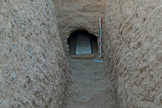
[image error] An Egyptian carving, originally created for Queen Tiye's temple, was discovered in a tomb (shown here) at the site of Sedeinga in Sudan.
An Egyptian carving, originally created for Queen Tiye's temple, was discovered in a tomb (shown here) at the site of Sedeinga in Sudan.
Credit: Photo by V. Francigny © Sedeinga Mission
View full size image"All the major inscriptions with the name of Amun in Egypt were erased during his reign," archaeology team member Vincent Francigny, a research associate at the American Museum of Natural History in New York, told Live Science in an interview.
The carving was originally created for the temple of Queen Tiye — Akhenaten's mother — who may have been alive when the defacement occurred. Even so, Francigny stressed that the desecration of the carving wasn't targeted against Akhenaten's own mom.
Today, only one column and a plethora of blocks survive from Queen Tiye's temple, which has not been excavated, Francigny said.
The archaeologists also found that, after Akhenaten's death, the god's face and hieroglyphs on this carving were restored. This restoration may have been done during the reign of the boy king Tutankhamun (reign 1336-1327 B.C.), who is famous for his rich tomb.
"The name of Amun as well as his face were first hammered out and later carved anew, proving that the persecution of this god extended to this remote province during the reign of Akhenaton and that his images were restored during the following reigns," Francigny and Claude Rilly, director of the French archaeological mission in Sedeinga, wrote in the most recent edition of the journal Sudan and Nubia.
Restoration
Akhenaten's religious revolution did not last. Shortly after his death, Tutankhamun, who may have been Akhenaten's son, assumed the throne and returned Egypt to its former polytheistic religion.
This particular carving would have been restored either during King Tut's reign or one of his successors'.
An ancient record tells of Tutankhamun's efforts to try to undo the revolution Akhenaten had unleashed. The account blasts Akhenaten, claiming that his revolution led the gods to abandon Egypt.
The "temples and the cities of the gods and goddesses … were fallen into decay, and their shrines were fallen into ruin, having become mere mounds overgrown with grass," the ancient record states (translation by William Murnane). "The gods were ignoring this land … if one prayed to a god, to ask something from him, he did not come at all, and if one beseeched any goddess in the same way, she did not come at all."
http://www.livescience.com/46978-egyptian-carving-discovered.html

 Here, the upper part of the Egyptian carving, showing the hieroglyph of Amun (top left); the hieroglyph and the god's face were hacked out on orders of pharaoh Akhenaten (reign 1353-1336 B.C) and were later restored.
Here, the upper part of the Egyptian carving, showing the hieroglyph of Amun (top left); the hieroglyph and the god's face were hacked out on orders of pharaoh Akhenaten (reign 1353-1336 B.C) and were later restored.Credit: Photo by V. Francigny © Sedeinga MissionA newly discovered Egyptian carving, which dates back more than 3,300 years, bears the scars of a religious revolution that upended the ancient civilization.
The panel, carved in Nubian Sandstone, was found recently in a tomb at the site of Sedeinga, in modern-day Sudan. It is about 5.8 feet (1.8 meters) tall by 1.3 feet (0.4 m) wide, and was found in two pieces.
Originally, it adorned the walls of a temple at Sedeinga that was dedicated to Queen Tiye (also spelled Tiyi), who died around 1340 B.C. Several centuries after Tiye's death — and after her temple had fallen into ruin — this panel was reused in a tomb as a bench that held a coffin above the floor
Scars of a revolution
Archaeologists found that the god depicted in the carving, Amun, had his face and hieroglyphs hacked out from the panel. The order to deface the carving came from Akhenaten (reign 1353-1336 B.C.), a pharaoh who tried to focus Egyptian religion around the worship of the "Aten," the sun disk. In his fervor, Akhenaten had the name and images of Amun, a key Egyptian god, obliterated throughout all Egypt-controlled territory. This included the ancient land of Nubia, a territory that is now partly in Sudan.

[image error]
 An Egyptian carving, originally created for Queen Tiye's temple, was discovered in a tomb (shown here) at the site of Sedeinga in Sudan.
An Egyptian carving, originally created for Queen Tiye's temple, was discovered in a tomb (shown here) at the site of Sedeinga in Sudan.Credit: Photo by V. Francigny © Sedeinga Mission
View full size image"All the major inscriptions with the name of Amun in Egypt were erased during his reign," archaeology team member Vincent Francigny, a research associate at the American Museum of Natural History in New York, told Live Science in an interview.
The carving was originally created for the temple of Queen Tiye — Akhenaten's mother — who may have been alive when the defacement occurred. Even so, Francigny stressed that the desecration of the carving wasn't targeted against Akhenaten's own mom.
Today, only one column and a plethora of blocks survive from Queen Tiye's temple, which has not been excavated, Francigny said.
The archaeologists also found that, after Akhenaten's death, the god's face and hieroglyphs on this carving were restored. This restoration may have been done during the reign of the boy king Tutankhamun (reign 1336-1327 B.C.), who is famous for his rich tomb.
"The name of Amun as well as his face were first hammered out and later carved anew, proving that the persecution of this god extended to this remote province during the reign of Akhenaton and that his images were restored during the following reigns," Francigny and Claude Rilly, director of the French archaeological mission in Sedeinga, wrote in the most recent edition of the journal Sudan and Nubia.
Restoration
Akhenaten's religious revolution did not last. Shortly after his death, Tutankhamun, who may have been Akhenaten's son, assumed the throne and returned Egypt to its former polytheistic religion.
This particular carving would have been restored either during King Tut's reign or one of his successors'.
An ancient record tells of Tutankhamun's efforts to try to undo the revolution Akhenaten had unleashed. The account blasts Akhenaten, claiming that his revolution led the gods to abandon Egypt.
The "temples and the cities of the gods and goddesses … were fallen into decay, and their shrines were fallen into ruin, having become mere mounds overgrown with grass," the ancient record states (translation by William Murnane). "The gods were ignoring this land … if one prayed to a god, to ask something from him, he did not come at all, and if one beseeched any goddess in the same way, she did not come at all."
http://www.livescience.com/46978-egyptian-carving-discovered.html

Published on July 25, 2014 16:37
100,000-Year-Old Case of Brain Damage Discovered
By Tia Ghose
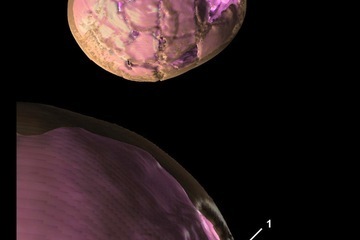
 A Paleolithic child that died 100,000 years ago may have suffered from brain damage after an injury. Researchers used a 3D reconstruction (shown here) to reveal the compound fracture and surface changes inside the skull
A Paleolithic child that died 100,000 years ago may have suffered from brain damage after an injury. Researchers used a 3D reconstruction (shown here) to reveal the compound fracture and surface changes inside the skull
Credit: Coqueugniot H, Dutour O, Arensburg B, Duday H, Vandermeersch B, et al. (2014) Earliest Cranio-Encephalic Trauma from the Levantine Middle Palaeolithic: 3D Reappraisal of the Qafzeh 11 Skull, Consequences of Pediatric Brain Damage on Individual Life Condit
An ancient skeleton unearthed in Israel may contain the oldest evidence of brain damage in a modern human.
The child, who lived about 100,000 years ago, survived head trauma for several years, but suffered from permanent brain damage as a result, new 3D imaging reveals.
Given the brain damage, the child was likely unable to care for himself or herself, so people must have spent years looking after the little boy or girl, according to the researchers who analyzed the 3D images. People from the child's group left funerary objects in the youngster's burial pit as well, the study authors said
Those signs of care for a disabled person suggest that the roots of human compassion go way back, said Hélène Coqueugniot, an anthropologist at the Centre National de la Recherche Scientifique (CNRS) at the University of Bordeaux in France, and lead author of the study.
"It is some of the most ancient evidence of compassion and altruism," Coqueugniot said.
Young child
The child's skeleton was first uncovered decades ago in a cave site known as Qafzeh in Galilee, Israel, which also contained 27 partial skeletons and bone fragments, as well as stone tools and hearths. [See Images of the Damaged Skull and Skeleton]
The child, whose sex couldn't be determined, was found with a visible fracture in the skull and a pair of deer antlers placed across the chest.
The researchers wanted to know more about the damage to the child's skull, so they created a cast of the interior of it and then used computed tomography (CT) scanning to create a 3D picture of the head.
The images revealed that the child suffered a blunt-force trauma at the front of the skull that created a compound fracture, with a piece of bone depressed in the skull. It wasn't clear whether child abuse or an accident caused the injury, the researchers concluded.
In addition, tooth growth indicated that the youngster was 12 or 13 years old when he or she died, but the child's brain volume was more akin to that of a 6- or 7-year-old — likely because the head trauma permanently halted brain growth, Coqueugniot told Live Science.
The brain injury would have led to difficulties in controlling movements and speaking, as well as caused personality changes and impaired the child's social functioning, the researchers wrote in their study, which was published July 23 in the journal PLOS ONE.
Human compassion?
Yet despite the youngster's severe disability, he or she was apparently cared for, in life and in death. Despite lacking the ability to survive on his or her own, the Paleolithic child lived for several years after the head injury. And when the child died, someone wanted to honor his or her memory by placing the deer antlers in his or her burial — a funerary marker that wasn't found in any of the other burials at the site, Coqueugniot said.
"He was very, very special in this group, and he has a very, very special burial," Coqueugniot said.
The findings are not the oldest example of compassion and care for the disabled in a hominid; a 500,000-year-old fossil human from Sima de los Huesos in Spain shows signs of severe brain deformity starting at birth, but that child still lived to age 5, which mean someone cared for the child despite his or her disorder.
But the Qafzeh child reveals a striking example of compassion and care for the disabled in early modern humans, who are anatomically similar to humans today, said Jean-Jacques Hublin, director of the department of human evolution at the Max Planck Institute for Evolutionary Anthropology in Germany.
It's not clear that head trauma caused brain development to halt, said Hublin, who was not involved in the study. "There is a large variation in brain size among humans, and this is perceptible already in infancy and childhood," Hublin told Live Science.
Therefore, the child may have simply have started out with a small brain, which would have remained relatively small as he or she grew, he said.
http://www.livescience.com/46955-ancient-brain-damage-unearthed.html


 A Paleolithic child that died 100,000 years ago may have suffered from brain damage after an injury. Researchers used a 3D reconstruction (shown here) to reveal the compound fracture and surface changes inside the skull
A Paleolithic child that died 100,000 years ago may have suffered from brain damage after an injury. Researchers used a 3D reconstruction (shown here) to reveal the compound fracture and surface changes inside the skullCredit: Coqueugniot H, Dutour O, Arensburg B, Duday H, Vandermeersch B, et al. (2014) Earliest Cranio-Encephalic Trauma from the Levantine Middle Palaeolithic: 3D Reappraisal of the Qafzeh 11 Skull, Consequences of Pediatric Brain Damage on Individual Life Condit
An ancient skeleton unearthed in Israel may contain the oldest evidence of brain damage in a modern human.
The child, who lived about 100,000 years ago, survived head trauma for several years, but suffered from permanent brain damage as a result, new 3D imaging reveals.
Given the brain damage, the child was likely unable to care for himself or herself, so people must have spent years looking after the little boy or girl, according to the researchers who analyzed the 3D images. People from the child's group left funerary objects in the youngster's burial pit as well, the study authors said
Those signs of care for a disabled person suggest that the roots of human compassion go way back, said Hélène Coqueugniot, an anthropologist at the Centre National de la Recherche Scientifique (CNRS) at the University of Bordeaux in France, and lead author of the study.
"It is some of the most ancient evidence of compassion and altruism," Coqueugniot said.
Young child
The child's skeleton was first uncovered decades ago in a cave site known as Qafzeh in Galilee, Israel, which also contained 27 partial skeletons and bone fragments, as well as stone tools and hearths. [See Images of the Damaged Skull and Skeleton]
The child, whose sex couldn't be determined, was found with a visible fracture in the skull and a pair of deer antlers placed across the chest.
The researchers wanted to know more about the damage to the child's skull, so they created a cast of the interior of it and then used computed tomography (CT) scanning to create a 3D picture of the head.
The images revealed that the child suffered a blunt-force trauma at the front of the skull that created a compound fracture, with a piece of bone depressed in the skull. It wasn't clear whether child abuse or an accident caused the injury, the researchers concluded.
In addition, tooth growth indicated that the youngster was 12 or 13 years old when he or she died, but the child's brain volume was more akin to that of a 6- or 7-year-old — likely because the head trauma permanently halted brain growth, Coqueugniot told Live Science.
The brain injury would have led to difficulties in controlling movements and speaking, as well as caused personality changes and impaired the child's social functioning, the researchers wrote in their study, which was published July 23 in the journal PLOS ONE.
Human compassion?
Yet despite the youngster's severe disability, he or she was apparently cared for, in life and in death. Despite lacking the ability to survive on his or her own, the Paleolithic child lived for several years after the head injury. And when the child died, someone wanted to honor his or her memory by placing the deer antlers in his or her burial — a funerary marker that wasn't found in any of the other burials at the site, Coqueugniot said.
"He was very, very special in this group, and he has a very, very special burial," Coqueugniot said.
The findings are not the oldest example of compassion and care for the disabled in a hominid; a 500,000-year-old fossil human from Sima de los Huesos in Spain shows signs of severe brain deformity starting at birth, but that child still lived to age 5, which mean someone cared for the child despite his or her disorder.
But the Qafzeh child reveals a striking example of compassion and care for the disabled in early modern humans, who are anatomically similar to humans today, said Jean-Jacques Hublin, director of the department of human evolution at the Max Planck Institute for Evolutionary Anthropology in Germany.
It's not clear that head trauma caused brain development to halt, said Hublin, who was not involved in the study. "There is a large variation in brain size among humans, and this is perceptible already in infancy and childhood," Hublin told Live Science.
Therefore, the child may have simply have started out with a small brain, which would have remained relatively small as he or she grew, he said.
http://www.livescience.com/46955-ancient-brain-damage-unearthed.html

Published on July 25, 2014 16:31
Long-Lost Anchor May Soon Give up Its Secrets
By Megan Gannon
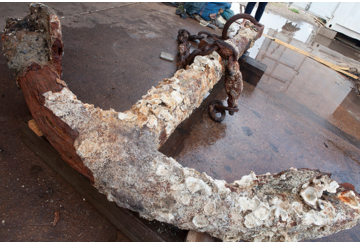
 This anchor, believed to have once belonged to the HMS Chatham, will undergo an intense cleaning at Texas A&M University.
This anchor, believed to have once belonged to the HMS Chatham, will undergo an intense cleaning at Texas A&M University.
Credit: Texas A&M University
After decades, possibly centuries, at the bottom of the sea — and a 2,200-mile-long (3,540 kilometers) road trip wrapped in damp blankets in the back of a pickup truck — a barnacle-crusted anchor arrived in Texas this week for a major cleaning.
The men who raised the object from the floor of the Puget Sound hope conservation efforts will uncover proof that they found the long-lost anchor from a historic British voyage around the world.
In 2008, a fisherman named Doug Monk was collecting sea cucumbers just north of Seattle near Whidbey Island when his diving gear got caught on a huge anchor, The Seattle Times reported. Monk teamed up with amateur historian Scott Grimm to study the object, and the two obtained legal rights to salvage it. Last month, the duo finally pulled the 10-foot (3 meters) anchor from the Puget Sound with a crane.
Monk and Grimm think the anchor belonged to the HMS Chatham, a service ship that accompanied the HMS Discovery on the Vancouver Expedition, a four-and-a-half-year exploration funded by the British crown in the late 18th century. In 1792, when the ship was navigating strong currents in the Puget Sound, the anchor became wedged against a large rock, and its cable snapped, according to historical records. Recovery efforts at the time failed, and the anchor was lost.
Monk and Grimm hired specialists at Texas A&M University's Center for Maritime Archaeology and Conservation to restore the sunken treasure. After a 36-hour drive from Washington state, the two men arrived Monday morning (July 21) in College Station, Texas, to deliver the object.
The duo, Grimm said in a statement, were confident that the conservation work would uncover markings "that show beyond a shadow of a doubt" the anchor indeed belonged to the British crown, proving wrong naysayers who think the HMS Chatham's anchor was lost farther north, somewhere in Bellingham Channel.
They may be in good company at Texas A&M, where Jim Jobling, who happens to be an expert on the history and development of English anchors, is leading the restoration at the university's Conservation Research Laboratory.
"I looked straight at it, and I said, 'It's a classic old English admiralty anchor,'" Jobling said. He added that the anchor would have been the right size for the HMS Chatham, though he cautioned against making any conclusions about the object just yet.
"Is it 100-percent HMS Chatham? That's difficult to say, but there are no smoking guns yet that say it's not," Jobling said.
It will likely take more than a year to strip the anchor of all the concretion, orange-colored rust, barnacles and mussels covering up any possible markings on its original iron surface, said Jobling.
"Iron in its happiest state is rust," Jobling told Live Science, and iron rusts much more quickly when salt is present.
For the next several months, Jobling and his team of graduate students in the nautical archaeology program will keep the anchor in a T-shaped steel tank to slowly coax the salt out of the iron artifact. The setup is essentially an electrolytic cell. In this case, the steel tank is the anode (or the positively charged electrode), and the anchor, propped up on special plastic pads, is the cathode (the negatively charged terminal). Jobling said he will put sodium hydroxide in the water and apply a direct-current power supply that will flow into the anchor, removing salt from the iron and dropping it into the water.
Once that solution reaches equilibrium, no more salt will come out of the anchor, and the liquid will need to be changed, Jobling said. There will likely be four or five change-outs over a period of a year and a half, and during each tank cleaning, the conservators will take the opportunity to tap away at the anchor with hammers and chisels to remove its crusty coating.
After the anchor is fully cleaned and given a protective coating, it will be sent back to Washington, where the salvors hope to find a local museum or other gallery that will permanently display the object.
"Our goal is definitely to keep it in the Northwest," Grimm said in a statement.
http://www.livescience.com/46969-lost-anchor-conservation.html


 This anchor, believed to have once belonged to the HMS Chatham, will undergo an intense cleaning at Texas A&M University.
This anchor, believed to have once belonged to the HMS Chatham, will undergo an intense cleaning at Texas A&M University. Credit: Texas A&M University
After decades, possibly centuries, at the bottom of the sea — and a 2,200-mile-long (3,540 kilometers) road trip wrapped in damp blankets in the back of a pickup truck — a barnacle-crusted anchor arrived in Texas this week for a major cleaning.
The men who raised the object from the floor of the Puget Sound hope conservation efforts will uncover proof that they found the long-lost anchor from a historic British voyage around the world.
In 2008, a fisherman named Doug Monk was collecting sea cucumbers just north of Seattle near Whidbey Island when his diving gear got caught on a huge anchor, The Seattle Times reported. Monk teamed up with amateur historian Scott Grimm to study the object, and the two obtained legal rights to salvage it. Last month, the duo finally pulled the 10-foot (3 meters) anchor from the Puget Sound with a crane.
Monk and Grimm think the anchor belonged to the HMS Chatham, a service ship that accompanied the HMS Discovery on the Vancouver Expedition, a four-and-a-half-year exploration funded by the British crown in the late 18th century. In 1792, when the ship was navigating strong currents in the Puget Sound, the anchor became wedged against a large rock, and its cable snapped, according to historical records. Recovery efforts at the time failed, and the anchor was lost.
Monk and Grimm hired specialists at Texas A&M University's Center for Maritime Archaeology and Conservation to restore the sunken treasure. After a 36-hour drive from Washington state, the two men arrived Monday morning (July 21) in College Station, Texas, to deliver the object.
The duo, Grimm said in a statement, were confident that the conservation work would uncover markings "that show beyond a shadow of a doubt" the anchor indeed belonged to the British crown, proving wrong naysayers who think the HMS Chatham's anchor was lost farther north, somewhere in Bellingham Channel.
They may be in good company at Texas A&M, where Jim Jobling, who happens to be an expert on the history and development of English anchors, is leading the restoration at the university's Conservation Research Laboratory.
"I looked straight at it, and I said, 'It's a classic old English admiralty anchor,'" Jobling said. He added that the anchor would have been the right size for the HMS Chatham, though he cautioned against making any conclusions about the object just yet.
"Is it 100-percent HMS Chatham? That's difficult to say, but there are no smoking guns yet that say it's not," Jobling said.
It will likely take more than a year to strip the anchor of all the concretion, orange-colored rust, barnacles and mussels covering up any possible markings on its original iron surface, said Jobling.
"Iron in its happiest state is rust," Jobling told Live Science, and iron rusts much more quickly when salt is present.
For the next several months, Jobling and his team of graduate students in the nautical archaeology program will keep the anchor in a T-shaped steel tank to slowly coax the salt out of the iron artifact. The setup is essentially an electrolytic cell. In this case, the steel tank is the anode (or the positively charged electrode), and the anchor, propped up on special plastic pads, is the cathode (the negatively charged terminal). Jobling said he will put sodium hydroxide in the water and apply a direct-current power supply that will flow into the anchor, removing salt from the iron and dropping it into the water.
Once that solution reaches equilibrium, no more salt will come out of the anchor, and the liquid will need to be changed, Jobling said. There will likely be four or five change-outs over a period of a year and a half, and during each tank cleaning, the conservators will take the opportunity to tap away at the anchor with hammers and chisels to remove its crusty coating.
After the anchor is fully cleaned and given a protective coating, it will be sent back to Washington, where the salvors hope to find a local museum or other gallery that will permanently display the object.
"Our goal is definitely to keep it in the Northwest," Grimm said in a statement.
http://www.livescience.com/46969-lost-anchor-conservation.html

Published on July 25, 2014 16:25
400-Year-Old Crucifix Found by Canadian Student

by Amanda Onion
The small copper crucifix found at the Colony of Avalon site.
Colony of Avalon Foundation

 GalleryWhatDidJesusLookLike?View Caption +#1: Getty Images
GalleryWhatDidJesusLookLike?View Caption +#1: Getty Images View Caption +#2: Wikimedia Commons
View Caption +#2: Wikimedia Commons View Caption +#3: Getty Images
View Caption +#3: Getty Images View Caption +#4: Corbis Images
View Caption +#4: Corbis Images View Caption +#5: Corbis Images
View Caption +#5: Corbis Images View Caption +#6: Corbis Images
View Caption +#6: Corbis Images View Caption +#7: Wikimedia Commons
View Caption +#7: Wikimedia Commons View Caption +#8: Corbis Images
View Caption +#8: Corbis Images View Caption +#9: Wikimedia Commons
View Caption +#9: Wikimedia Commons View Caption +#10: Christ the Redeemer statue overlooking Rio de Janeiro Mike Theiss/Corbis
View Caption +#10: Christ the Redeemer statue overlooking Rio de Janeiro Mike Theiss/Corbis View Caption +#11: Screenshot/Wikimedia Commons Up Next Artifacts Revealed in Tomb of King Henry VII: Photos It is tiny in size — measuring only 1.1 inches in width — and its top is broken, but a 400- year-old copper crucifix found at Newfoundland's Avalon Peninsula earlier in July has big historical significance, according to historians. It symbolizes an early dream of religious freedom in North America.
View Caption +#11: Screenshot/Wikimedia Commons Up Next Artifacts Revealed in Tomb of King Henry VII: Photos It is tiny in size — measuring only 1.1 inches in width — and its top is broken, but a 400- year-old copper crucifix found at Newfoundland's Avalon Peninsula earlier in July has big historical significance, according to historians. It symbolizes an early dream of religious freedom in North America.The artifact is clearly a Catholic item, featuring a simple representation of Christ on the front and the Virgin Mary and Christ Child on the back. Yet it was found in a predominantly English settlement.
Back in England, its owner would could be fined, imprisoned or put to death for practicing Catholic faith, according to Barry Gaulton, Field Director of the Colony of Avalon and Associate Professor of Archaeology at Memorial University of Newfoundland.
"The Catholic iconography is unmistakable. As with all archaeological discoveries, the context in which the artifact was found tells us its story," Gaulton said in a release.
The story the crucifix tells is that of the dream of the Newfoundland's settler, Sir George Calvert. Calvert was an English lord who helped settle the colony around 1628. His vision was to create a community where all Christians could enjoy freedom of religion without fear of persecution. He was one of the early pioneers of religious freedom in North America.
Just the presence of the Catholic crucifix reveals that Calvert's vision had started to take shape. The small cross was found by Anna Sparrow, an undergraduate student at Memorial University in St. John’s.
As for who the crucifix belonged to, the archaeologists are not sure. They say it could have belonged to one of the craftsmen working on Calvert's house, or the colony's second governor, the Catholic gentleman Sir Arthur Aston, or even George Calvert himself.
An archaeologist's job can be painstaking, tedious work, involving careful excavation, delicate sifting and gentle brushing. For Sparrow, the thrill of finding such a significant artifact, made all the hard work worthwhile.
As she said in a press release, "There is so much time, effort and patience involved in excavation, that to find something with such historical significance is incredible."
http://news.discovery.com/history/archaeology/400-year-old-crucifix-found-by-canadian-student-140723.htm

Published on July 25, 2014 16:12
History Trivia - Charles the Bald orders defensive measures against the Vikings
July 25

864 The Edict of Pistres of Charles the Bald ordered defensive measures against the Vikings.

1215 Frederick II, called Stupor Munci (The Amazement of the World), was crowned Holy Roman Emperor at Aix-la-Chapelle.

1261 The city of Constantinople was recaptured by Nicaean forces under the command of Alexios Strategopoulos, re-establishing the Byzantine Empire.

1394: King James I of Scotland was born. He became heir to the throne upon the murder of his brother Robert. He himself would be assassinated in 1437.

1603 James VI of Scotland was crowned as king of England (James I of England), uniting the Kingdom of England and Kingdom of Scotland into personal union. Political union would occur in 1707.


864 The Edict of Pistres of Charles the Bald ordered defensive measures against the Vikings.

1215 Frederick II, called Stupor Munci (The Amazement of the World), was crowned Holy Roman Emperor at Aix-la-Chapelle.

1261 The city of Constantinople was recaptured by Nicaean forces under the command of Alexios Strategopoulos, re-establishing the Byzantine Empire.

1394: King James I of Scotland was born. He became heir to the throne upon the murder of his brother Robert. He himself would be assassinated in 1437.

1603 James VI of Scotland was crowned as king of England (James I of England), uniting the Kingdom of England and Kingdom of Scotland into personal union. Political union would occur in 1707.

Published on July 25, 2014 04:10
July 24, 2014
Someone To Love Me trilogy by Gladys Quintal is now LIVE!!!!!!

Amazon Apple Nook Kobo Google Smashwords All Romance JOIN THE RELEASE PARTY HERE
 Undeserving (Novella #1 in the Someone To Love Me trilogy) All of her life, Bree had been treated badly by men. According to her mother, it was just the way it was with the women in her family and there was no point in trying to fight it. There was no sense in dreaming about Prince Charming right out of the story books, he just didn't exist. She had to accept her fate and move on. It was as simple as that.
Undeserving (Novella #1 in the Someone To Love Me trilogy) All of her life, Bree had been treated badly by men. According to her mother, it was just the way it was with the women in her family and there was no point in trying to fight it. There was no sense in dreaming about Prince Charming right out of the story books, he just didn't exist. She had to accept her fate and move on. It was as simple as that.Bree craved love. She longed for a man to promise her his heart and soul and protect her from the monsters that she had grown accustomed to. She prayed that her mother was wrong and that one day he would find her.
 Unforgiving (Novella #2 in the Someone To Love Me trilogy) When she is given a second chance, Bree tries to put the pieces of her shattered life back together. Without her abusive husband ruling her every move, she begins to enjoy her newly found freedom and decides to explore her feelings for his younger brother.
Unforgiving (Novella #2 in the Someone To Love Me trilogy) When she is given a second chance, Bree tries to put the pieces of her shattered life back together. Without her abusive husband ruling her every move, she begins to enjoy her newly found freedom and decides to explore her feelings for his younger brother. But is the violence truly over? Or is Bree undeserving as her mother always said she was......
 Understanding (Novella #3 in the Someone To Love Me trilogy) Still believing that her mother may have been right and everything she touches turns to dust, Bree decides to break away from the entire Butler family. Can she put the pieces of her shattered past behind her and start afresh on her own? Or will Trey's undying love draw her back into his arms and into his world once more.
Understanding (Novella #3 in the Someone To Love Me trilogy) Still believing that her mother may have been right and everything she touches turns to dust, Bree decides to break away from the entire Butler family. Can she put the pieces of her shattered past behind her and start afresh on her own? Or will Trey's undying love draw her back into his arms and into his world once more. Edited by: Pamela Gifford
Cover Artist: Erin Dameron-Hill
Cover Models: Angelina Cavanaugh and Ronen Cain

Published on July 24, 2014 11:22
History Trivia - Mary, Queen of Scots, forced to abdicate
July 24

1148 Louis VII of France laid siege to Damascus during the Second Crusade.
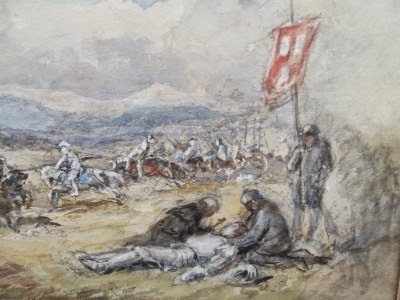
1411 Battle of Harlaw, Highland and Lowland Scots clashed at Red Harlaw, which was one of the bloodiest battles of Scottish history.
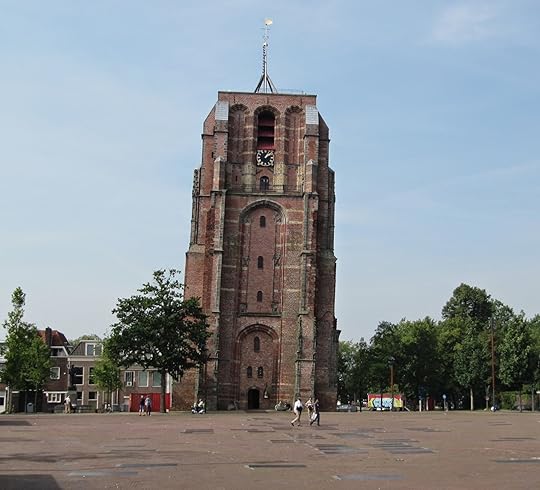
1487 Citizens of Leeuwarden, Netherlands held a strike against a ban on foreign beer.

1567 Mary, Queen of Scots, was forced to abdicate and was replaced by her one-year-old son James VI.


1148 Louis VII of France laid siege to Damascus during the Second Crusade.

1411 Battle of Harlaw, Highland and Lowland Scots clashed at Red Harlaw, which was one of the bloodiest battles of Scottish history.

1487 Citizens of Leeuwarden, Netherlands held a strike against a ban on foreign beer.

1567 Mary, Queen of Scots, was forced to abdicate and was replaced by her one-year-old son James VI.

Published on July 24, 2014 05:07
July 23, 2014
Margaret Arvanitis will be at the 6th Annual NW Book Festival July 26th, 2014

Margaret Arvanitis will be attending with Patsy Brookshire.
The 6th Annual NW Book Festival
Date: Saturday, July 26th, 2014
Time: 11am to 5:00pm...
Where: Pioneer Courthouse Square, Portland, OR
(corner of SW Sixth Ave. and SW Morrison.)
 Margaret Arvanitis
Margaret Arvanitis
 Patsy Brookshire
Patsy Brookshire

Published on July 23, 2014 05:21
History Trivia - Crusaders attack Damascus
July 23
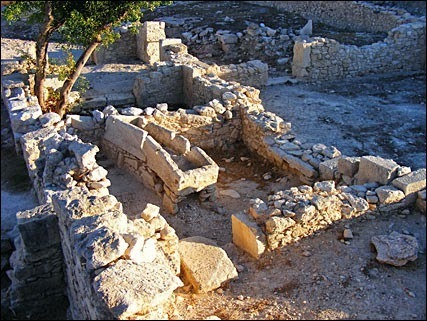
365 a great earthquake struck the eastern Mediterranean and destroyed the Roman city of Kourion on the island of Cyprus.

685 John V became Roman Catholic pope. He was the first pope of the Byzantine Papacy allowed to be consecrated by the Byzantine Emperor without prior consent, and the first in a line of ten consecutive popes of Eastern origin. His papacy was marked by reconciliation between the city of Rome and the Empire.

1148 Crusaders attacked Damascus.

1313 Bridget the patron saint of Sweden who founded the Brigittine Order died. Bridget was a Swedish princess renowned for her piety from her childhood; she was given in marriage to Ulf, Prince of Mercia, by whom she had a large family. After Ulf's death in 1344 and with the help of King Magnus, she established on her own estate at Vadstena the first monastery for men and women, of which Katherine, her daughter, became the first Abbess soon after her death in 1375. At this time double monasteries were not unusual: the monks and nuns used the same chapel, but lived in separate wings of the monastery, the confessor alone having access to the nuns.


365 a great earthquake struck the eastern Mediterranean and destroyed the Roman city of Kourion on the island of Cyprus.

685 John V became Roman Catholic pope. He was the first pope of the Byzantine Papacy allowed to be consecrated by the Byzantine Emperor without prior consent, and the first in a line of ten consecutive popes of Eastern origin. His papacy was marked by reconciliation between the city of Rome and the Empire.

1148 Crusaders attacked Damascus.

1313 Bridget the patron saint of Sweden who founded the Brigittine Order died. Bridget was a Swedish princess renowned for her piety from her childhood; she was given in marriage to Ulf, Prince of Mercia, by whom she had a large family. After Ulf's death in 1344 and with the help of King Magnus, she established on her own estate at Vadstena the first monastery for men and women, of which Katherine, her daughter, became the first Abbess soon after her death in 1375. At this time double monasteries were not unusual: the monks and nuns used the same chapel, but lived in separate wings of the monastery, the confessor alone having access to the nuns.

Published on July 23, 2014 05:19



